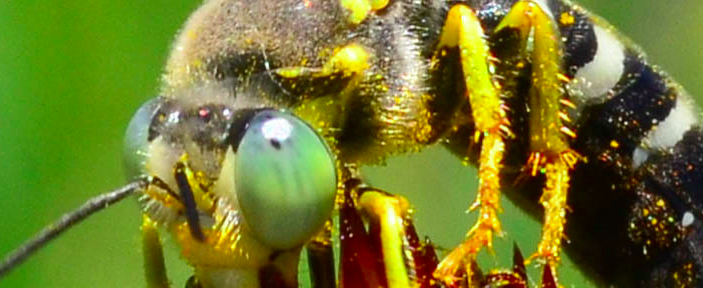
This black wasp has greenish yellow stripes on its abdomen . Its legs are yellow, except for the part closest to the body. Its wings are transparent, with brown veins. It measures 13 to 16 mm long.
Life cycle
The solitary female digs her nest in sandy soil. She goes hunting and brings back paralyzed prey to the underground shelter that will serve as food for the larva. She lays an egg on one of the prey, then blocks the entrance to the nest with sand. The larva feeds, develops and transforms into a pupa in the nest before emerging as an adult.
Geographical distribution
This species is found throughout North America, except in the west, on the Pacific coast.
Habitat
This wasp lives in open sandy environments, such as the edges of lakes, beaches or sandy meadows. In urban areas, it can nest in playgrounds, parks, sandboxes, etc.
Food
The adult feeds on flower nectar.
The larva feeds on various species of flies from the tabanid family ( Chrysops ) and bombyliides, captured and paralyzed by the female. This one sees to the supply of its offspring by depositing fresh preys in the nest approximately every five days. The female bembex can capture up to 20 preys to feed a single larva.
What you need to know
This insect very quickly digs its burrow in the sand and disappears there in a few seconds.
The female Bembex often excavates several nests not far from each other. However, she only uses one or two at a time for her larvae. The additional nests could be a diversion for predators or parasites.
Along with the bicyrt wasp , this insect is one of the two most common sand wasps in Quebec. In some years, both species are common in city parks where sand-covered surfaces are found.
Ecological roles
This wasp species is a predator and plays an important role in controlling fly populations.